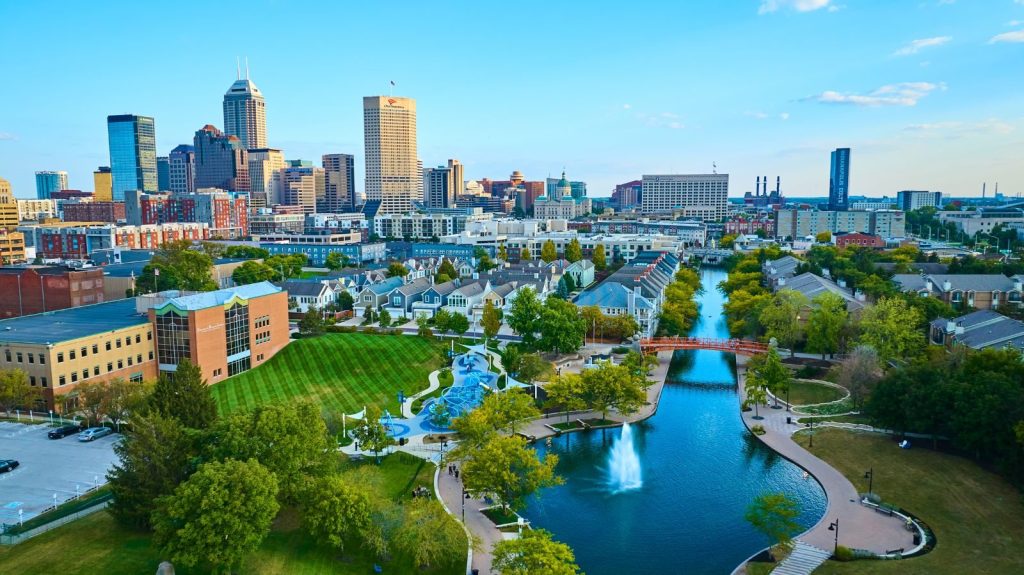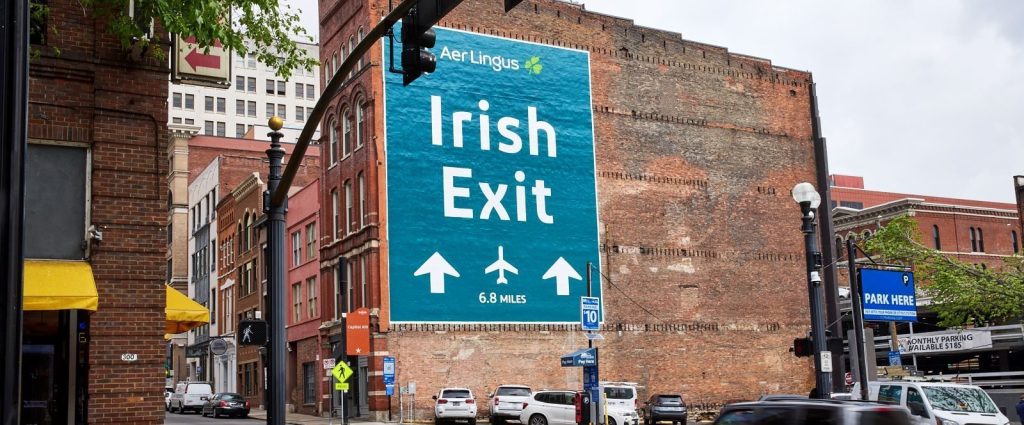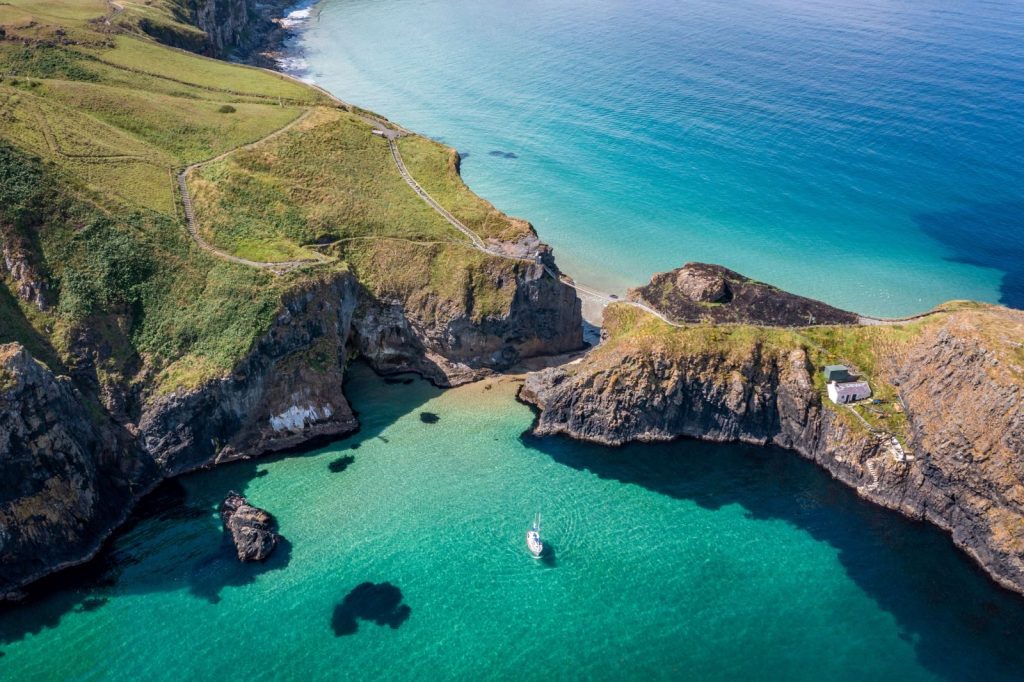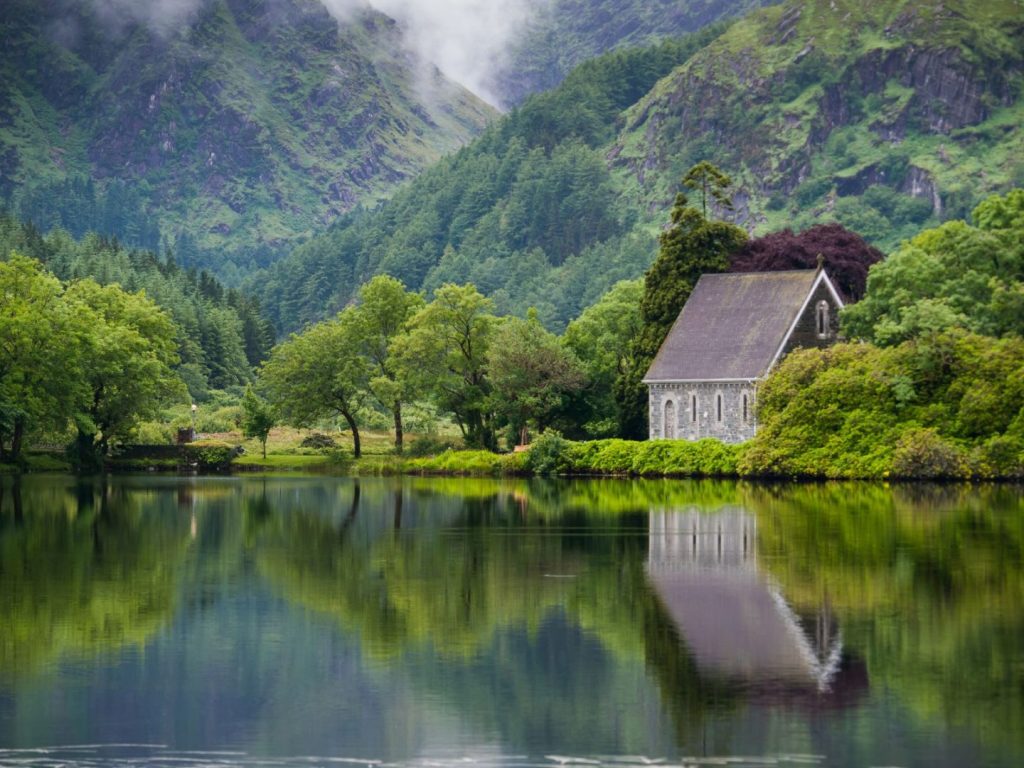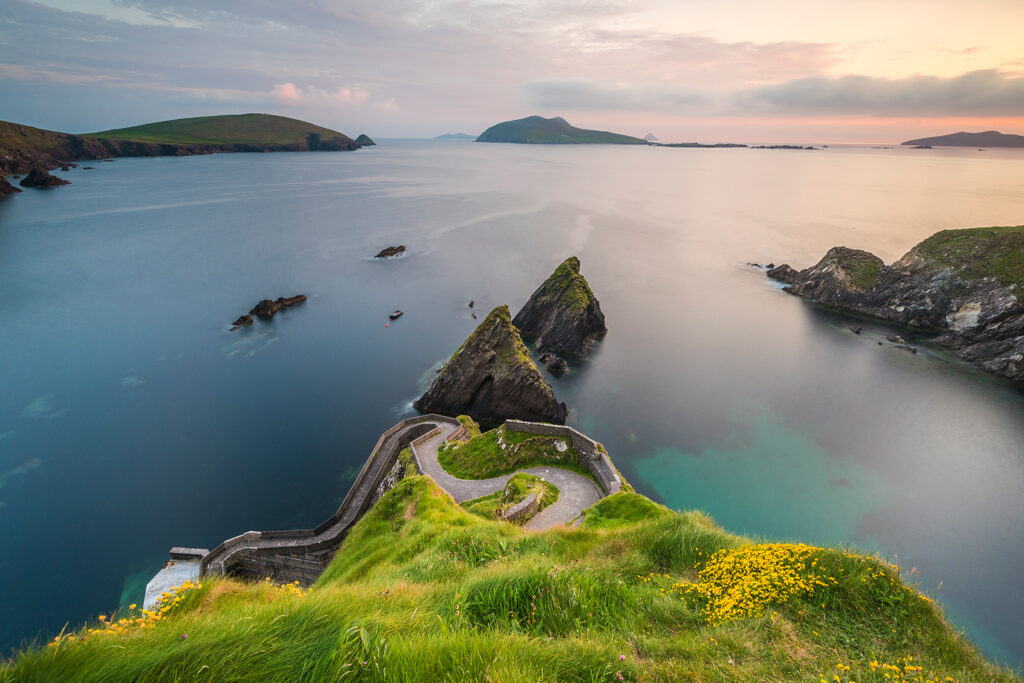
A Guide to the Wild Atlantic Way
If you’re looking for a vacation full of rich culture, stunning scenery and delicious artisan food, look no further than Ireland’s Wild Atlantic Way.
The coastal drive meanders along Ireland’s Atlantic coast taking in some of the most beautiful parts of the country.
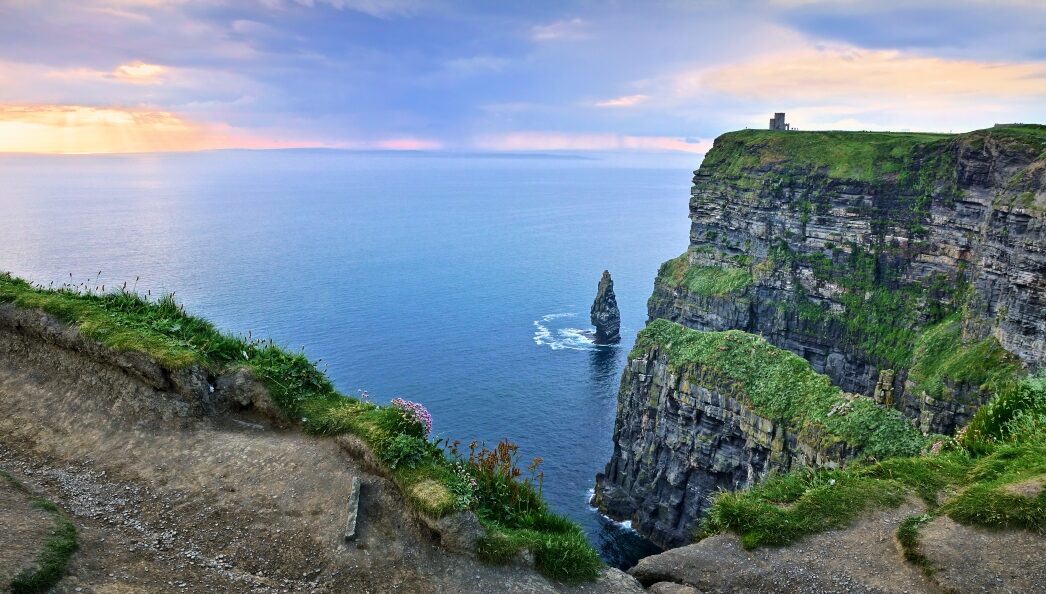
Panoramic sunset at the Cliffs of Moher with Branaunmore sea stack, Ireland
If you’re in search of a vacation destination that’s uncrowded, serene and fresh, the West of Ireland is the perfect place for you. Whether relaxing is enjoying a seaweed bath, catching a wave or horseback riding along a beach, you will find it all and more in Ireland. The Irish are also among the warmest and most welcoming people in the world and will do everything possible to ensure you have a wonderful vacation.
What is the Wild Atlantic Way?
The Wild Atlantic Way is a coastal drive along the west coast of Ireland. Let’s explore the longest defined coastal drive in the world.
Expect wild, raw beauty punctuated by sea views that will take your breath away. If you have Irish roots your ancestors may have lived or worked along this spectacular coastline. If not, it’s the vacation of a lifetime not to be missed.
Wild Atlantic Way Itinerary
One of the most challenging parts of planning your vacation to Ireland’s Atlantic coast is working out an itinerary. Our advice? Less is more when it comes to a vacation in Ireland.
Everything about the west coast is about slowing down from the hectic pace of modern life. Although distances may appear short, the roads in the west of Ireland are narrow and winding, so travel times may be longer than expected.

So much of the enjoyment of a vacation along the Wild Atlantic Way is found in taking your time. When planning your journey, allow enough time to cross that headland and find a hidden beach, stop in a tiny village for seafood by an open fire, or to stay an extra night somewhere and enjoy the live traditional music. Make sure you don’t forget your camera. It won’t be hard to find pretty scenery to photograph but to help you, we’ve chosen some of the most instagrammable spots along the Wild Atlantic Way.
The Wild Atlantic Way in 5 sections
Ireland is a small country, but make no mistake: between the hundred of inlets and bays the make the coastline so rich and beautiful, the Wild Atlantic Way covers a full 1,600-mile route. To consider taking on the full route all at once would not do it justice. Remember: “Take your time!” We’ve divided the route into five more manageable areas to explore: Northern, Northwestern, Western, Southwestern and Southern. We begin at the northernmost point and make our way down the Irish coast to Cork in the South:
Section 1: Guide to the Northern Wild Atlantic Way
Inishowen Peninsula to Donegal Town
If you want to journey off the beaten track on the Wild Atlantic Way then head north to Donegal, Ireland’s longest coastal county. Start at Ireland’s most northerly point, Malin Head, and work your way down the coastline, with the ocean on your right-hand side. Include a stop at the historical Fanad Head Lighthouse and the highest sea cliffs in Ireland at Slieve League.
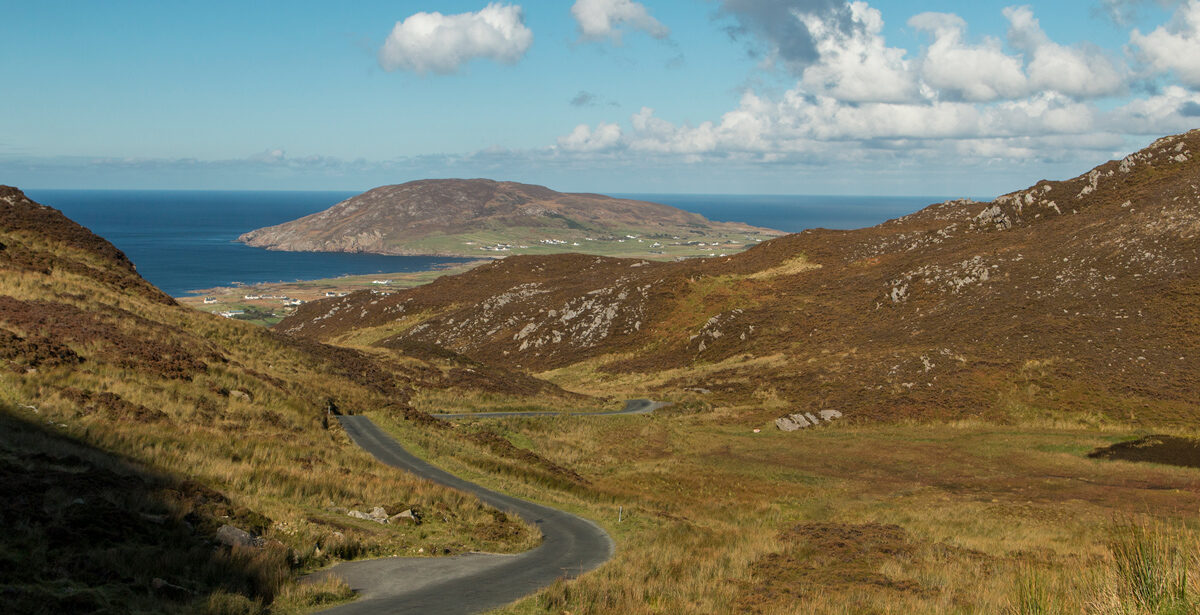
If the weather is good, Donegal is home to no less than 30 blue flag beaches nestled among rugged coastline that will take your breath away. If you enjoy an active vacation, Donegal has become a top destination for big wave surfing. But don’t worry if you aren’t a pro, there are plenty of sheltered beaches where you can learn the basics.
Get active on this stretch of the Wild Atlantic Way with coasteering, kayaking or bodyboarding. If you’re looking for something more sedate, Donegal is also home to some wonderful links golf courses where you can get a round in while enjoying spectacular coastal views.
If you’ve already experienced and loved the rugged beauty of the kingdom that is Kerry then the Wild Atlantic Way in Donegal is a more undiscovered part of Ireland to explore on your next vacation. If you find yourself with a couple of days to spare, there’s plenty of things to do in 48 hours in Donegal.
Section 2: Guide to the Northwestern Wild Atlantic Way
Donegal Bay to Westport
Travelling south from Donegal to Sligo and Mayo the coastline softens somewhat, but is no less impressive. Sligo is fast becoming the cultural and food hub of the North West. Enjoy a wide variety of bars and restaurants in the evenings. During the day, make the most of the beautiful scenery, whether it’s climbing Benbulben, the iconic mountain made famous in the poetry of WB Yates, kite surfing or white water rafting.
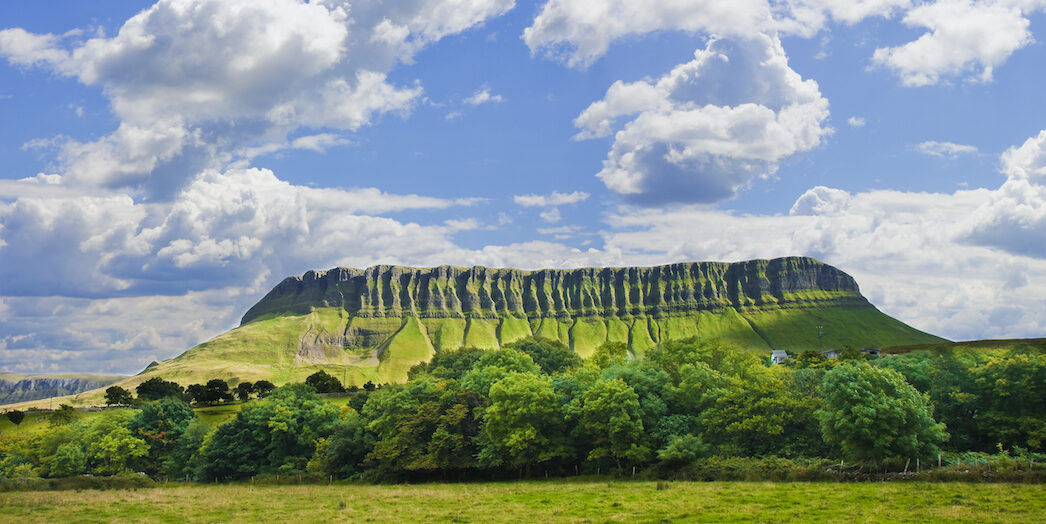
Benbulben, Sligo
If culture is more your thing, you’ll find it in spades in Co. Sligo. If you’re a fan of poetry, spend an hour or two in Yates Society where you can take in one of the many events held there across the year. Sligo is also home to the Hawk’s Well Theatre and The Model Art Gallery where you can enjoy contemporary art or live performance. As you leave Sligo don’t forget to stop in Strandhill for a stroll on the beach and some of the best ice-cream in the area.
Do not underestimate the beauty of the north Mayo coastline. It’s a stunning mix of soaring cliffs, dry stone walls and blanket bog, all watched over by rolling hills. While you’re in this region, a visit to the prehistoric Ceide Fields is a must. The archaeological site contains the oldest known field systems in the world.
When the time comes to move on don’t miss the opportunity to visit the nearby outcrop of Downpatrick Head. Not only is it a place of scenic beauty but it also played important roles as a hideout during the 1798 Irish Rebellion and as a lookout point during World War II. You can still see one of the 80 ‘EIRE’ markings around the Irish coastline from that period. These let pilots flying overhead know that they were flying over Ireland.
If you’re a foodie, the ‘Gourmet Greenway’ in Co Mayo is for you. This food trail includes eighteen artisan producers who showcase the area’s delicious food. Further along the coast, the island of Achill is only a few hundred feet from the mainland, connected by a bridge. Visit for an insight into island life, without having to take a boat! Enjoy a scenic walk to the deserted village where you’ll find the remains of almost 100 stone houses – a haunting reminder of times past.
The larger towns of Ballina and Westport both offer plenty of choices when it comes to accommodation and refreshment. If you want to catch some traditional Irish music, Matt Molloy’s in Westport is famous for their nightly sessions.
Section 3: Guide to the Western Wild Atlantic Way
Killary Harbour to Clifden to Galway
Galway and the West is the part of the Wild Atlantic Way to visit if you want an Irish vacation that truly offers something for everyone. Galway boasts some of the most remote coastal scenery in the country, a vibrant city, and island communities where Irish remains the first language. It is most definitely a county of contrasts. If Galway sounds appealing, then 2020 may be the year to visit as it is also a European Capital of Culture.
In a part of Ireland that is already famous for its rich culture, there is even more celebration of what makes Irish people from all backgrounds who we are. Enjoy one of the many activities planned throughout the year on your Wild Atlantic Way vacation:
Galway International Arts Festival
Galway Comedy Festival
Galway Oyster Festival
Galway Races
Clarinbridge Oyster Festival
Galway Food Festival
Galway Film Fleadh
Cuirt Literary Festival
The Latin Quarter
Galway Christmas Market
Apart from Galway City, Connemara is an area of natural beauty and home to the biggest National Park in Ireland. In the National Park you can enjoy 2,000 hectares of mountains, bogs, grassland and forest. If you love hiking this is a part of Ireland not to miss. As you might expect, the park is home to many forms of wildlife from tiny insects to songbirds like stonechats, chaffinches and robins. You may also be lucky enough to spot a bird of prey like the merlin or peregrine falcon. The Connemara pony roams free around the park. This native Irish breed is known for being small but stocky. Domesticated ponies played a central role in working small farms in the surrounding area for hundreds of years.
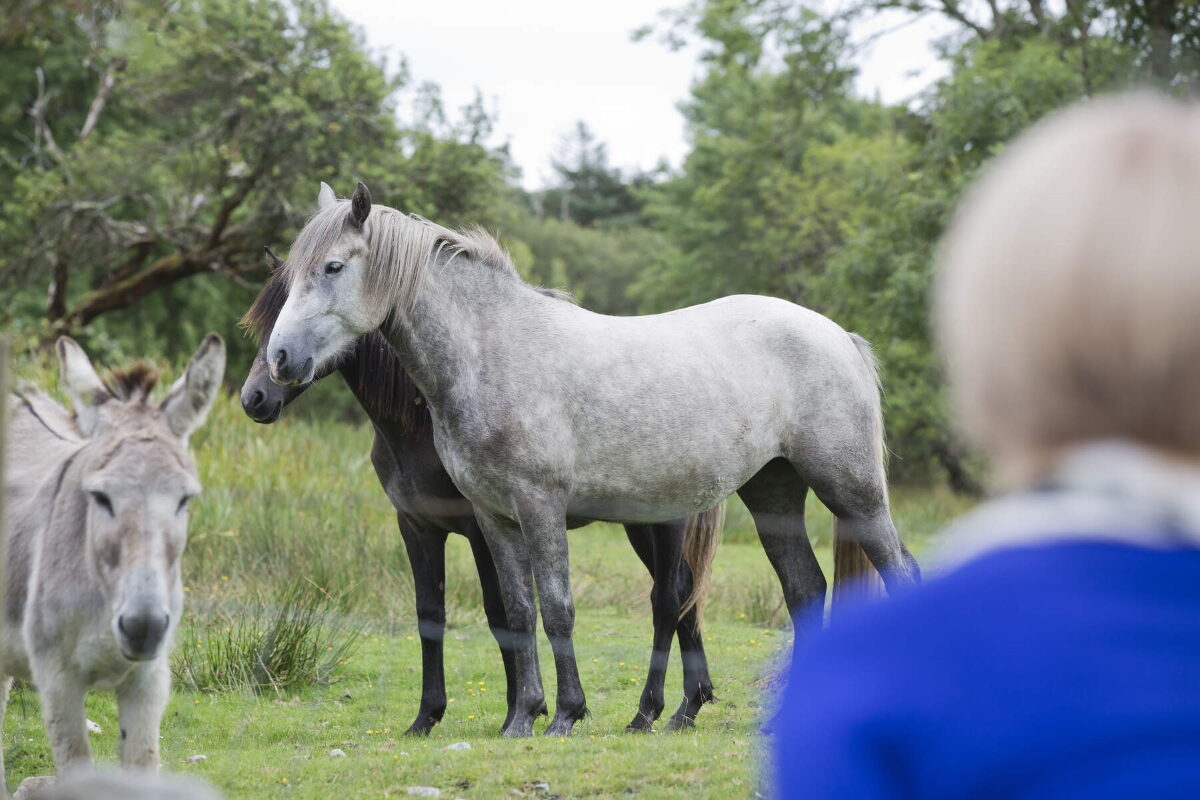
Finally, try to visit one of the island communities during your time in Galway. The Aran Islands are the most well known inhabited offshore islands, but Inishboffin is also well worth a visit. The Irish language is widely spoken on all of the islands. Visitors to these unique communities can experience the very traditional Irish culture that is still alive and well there. Each of the Aran Island has something unique to offer:
Inismore: the largest of the three islands, it has the best tourist infrastructure with bus, horse and cart and bike tours of the island available. It’s also home to Dun Aengus, a prehistoric hill fort. Coastal erosion means half of the fort has fallen into the sea, leaving a semi-circular structure on a cliff 100 meters above the sea. It has to be seen to be believed.
Inis Meáin: the least developed of the three islands. If you want a true reflection of island life, this is the place to go, but be aware that there will be fewer accommodation and activity options. Activities on the island are mainly linked to its natural features.
Inis Óirr: is the smallest of the three islands. The island is home to Áras Éanna a 70 seater theatre and art gallery which often hosts plays and traditional music concerts. The island is also an off-the-beaten-track location for experienced surfers.
If you want to spend even more time in the west, you won’t want to miss our guide to County Galway.
Section 4: Guide to the Southwestern Wild Atlantic Way
The Burren to Limerick
Heading south from Galway the Wild Atlantic Way meanders down the coast to Ireland’s Southwest. The counties of Clare, Limerick and Kerry are always popular options for visitors to Ireland.
If your vacation time is limited, this may be the destination to choose as Aer Lingus flies from many airports in the US direct to Shannon Airport, which is less than 30 minutes from the route. There are many, many highlights in this region:
Kinvarra: This picturesque village on the Galway/Clare border, is a beautiful place to stop for lunch and a wander around the many craft shops based there.
Doolin and the Cliffs of Moher: Allow plenty of time for a visit to the iconic cliffs of Moher: Stretching for 14 miles they are one of Ireland’s most-visited natural attractions and are not to be missed. On a clear day you’ll be able to see the Aran Islands, Galway Bay and the Dingle peninsula from the cliffs.
Once you’ve enjoyed the magnificent cliffs, take some time to explore the Burren National Park. The Burren is just under 4,000 acres of exposed limestone that still contains a huge selection of flora and fauna. There are seven marked walking trails to take through the National Park. Be warned! It is illegal to pick flowers or damage the Burren in any way.
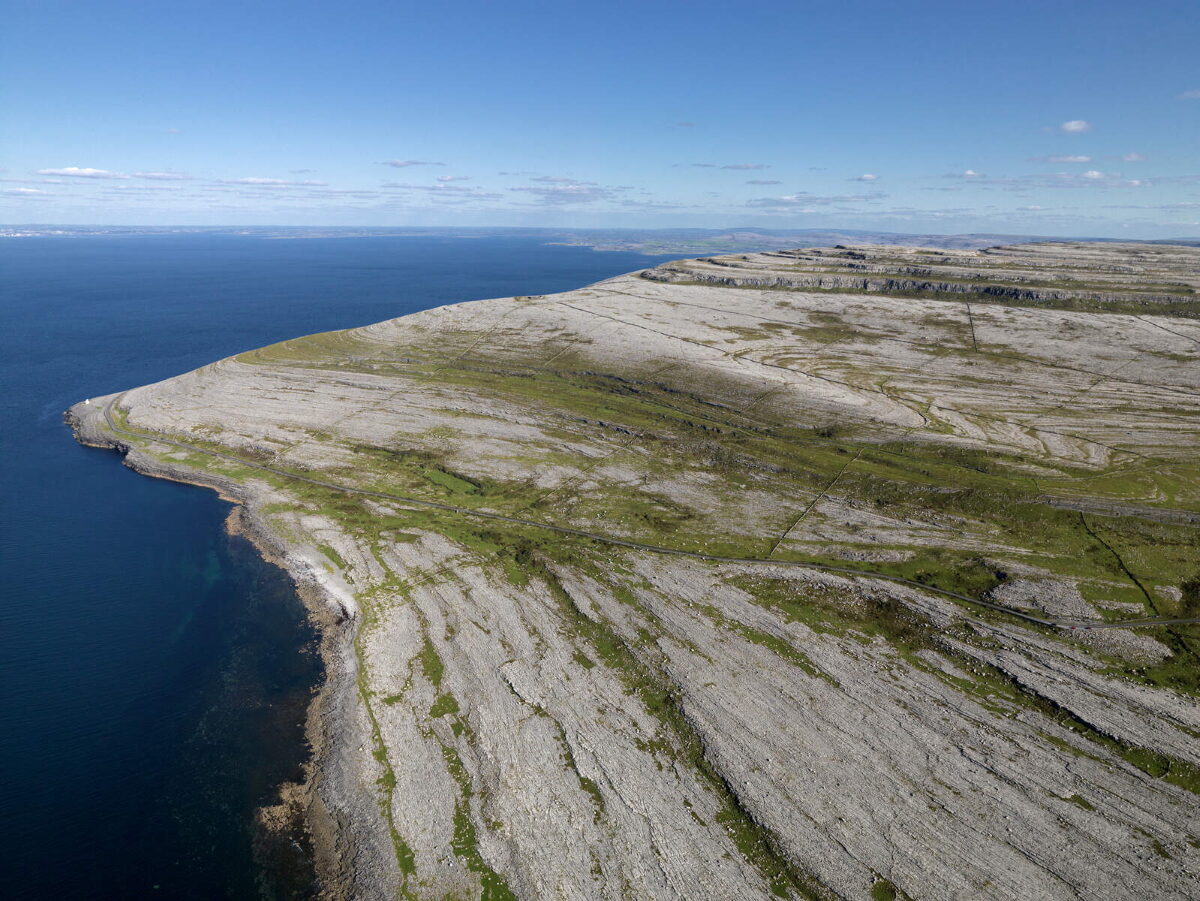
Aillwee Cave: Located under the Burren you will find one of the oldest caves in Ireland. The cavernous space is a sight to behold and well worth a stop if you’re in the area.
Enjoy some seafood: The towns of Lahinch and Spanish Point are famous for their seafood. If you enjoy surfing, Lahinch is also a popular surf spot.
Loop Head: It’s worth spending some time on this beautiful peninsula. It’s likely to be less crowded than the more popular destinations but is no less scenic. Activities including dolphin watching and coasteering will keep families of all ages entertained.
Although technically located just off the Wild Atlantic Way, Limerick City on the banks of the River Shannon is worth a visit. Check out King John’s Castle, or catch a game of rugby in Thomond Park. There’s lots to do in Limerick with your family.
Section 5: Guide to the Southern Wild Atlantic Way
If you choose to visit the south of Ireland, you’re picking one of the most popular destinations for visitors. We call Kerry ‘The Kingdom’ and not without reason: It’s home to some of the most stunning coastal and pastoral scenery in Ireland. Truly.
While it’s likely to be busy during the peak summer months, if you’re planning a visit in spring or autumn, it will be quieter. Visit in winter and you can enjoy the area like a local. There are so many highlights on this part of the Wild Atlantic Way, it’s hard to narrow them down to just a few. Our favourites include:
Tralee: Home of the world-renowned ‘Rose of Tralee Festival’ this market town is home to The National Folk Theatre and the Blennerville Windmill. If you encounter a wet day on your Wild Atlantic Way vacation this is the place to go. The indoor Aquadome or, for younger water babies, the Playdium, are sure to keep a young family entertained for hours.
Dunquin: Located on the most westerly tip of the Dingle peninsula, Dunquin is a Gaeltacht village where Irish is still spoken as a first language (although everyone speaks English too). It’s well known for its dramatic cliff scenery, but maybe most famous for its proximity to the Blasket Islands. Populated until the 1950s the Blasket Islands were famous for its writers including Peig Sayers, Tomás Ó Criomhthain, and Muiris Ó Súilleabháin who wrote about the joys and struggles of island life. If you have time, it is worth visiting the islands on a day trip to walk among the deserted villages and see the abundance of wildlife on the island.
Dingle: This is probably the most-visited town in Ireland and not without reason. Brightly coloured buildings, sea views and award-winning bars and restaurants make it a must on any vacation to this part of Ireland. The town is also famous for ‘Fungie’ a bottlenose dolphin who has lived in the surrounding bay since 1984. If you can, take a boat trip out into the bay and, although there are no guarantees, you may spot him swimming alongside the boat or in the distance.
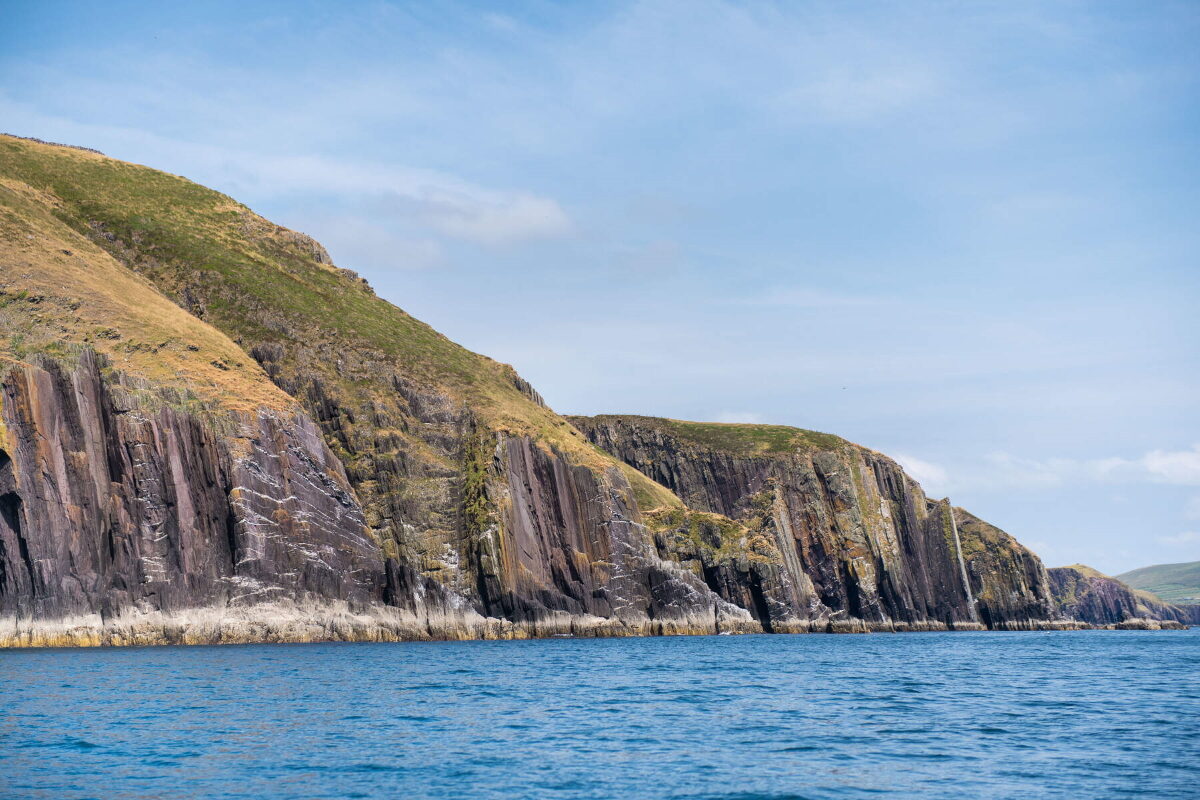
Inch Strand: This long sandy beach is a great place to stop for a walk, a swim or some adventure sports. There are lifeguards during the summer season and you can hire wetsuits on the beach if the Atlantic proves to be too chilly.
Skellig Michael: Star Wars fans will recognise the Skellig Islands from scenes in Episode VII The Force Awakens, filmed on and around the islands. As well as being a famous as a filming location, the islands are a UNESCO heritage site. This isolated outcrop was once home to a small group of monks who lived in the beehive cells. Tours to the island are possible but they are weather dependent and may be cancelled as a result of rough seas.
Ring of Kerry: Although parts of the route are on the Wild Atlantic Way, the Ring of Kerry also includes inland locations like Killarney National Park that are worth a visit during your vacation.
Beara: For our last two stops we cross the county border into the largest county in Ireland, Cork. The Beara Peninsula is tranquil and unspoiled. Prepare for narrow, winding roads but take your time, it is worth the journey. Take Ireland’s only cable car out to Dursey Island, known for its wildlife, particularly bird watching. If you do go out to the island be sure to stock up on food and drinks as there are no restaurants or shops on the island.
Kinsale: Close to the end of the Wild Atlantic Way is the wonderful town of Kinsale. Foodie and craft heaven, it’s a fantastic place to end your vacation. Highlights in the area include a meal in one of the many gourmet restaurants in the town, a tour of Charles Fort or a round of golf at The Old Head of Kinsale, one of the most scenic and challenging courses in the country.
Time is a gift. When it’s gone, it’s gone! So what are you waiting for?

